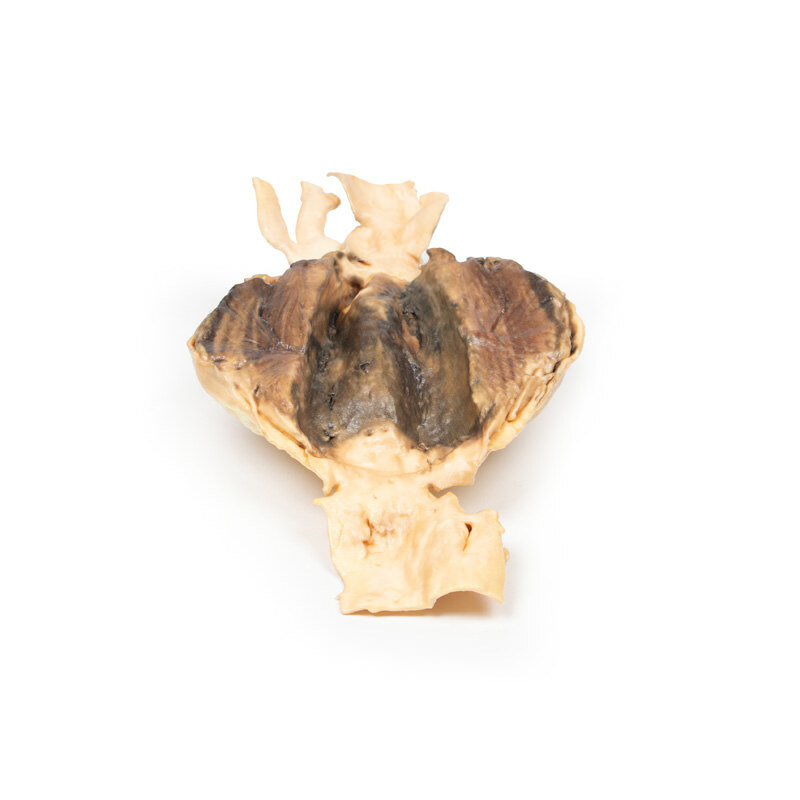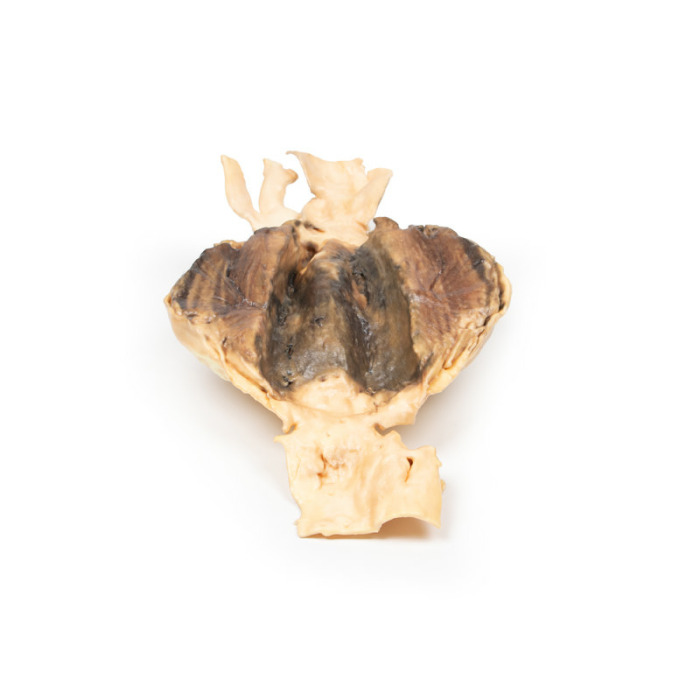MP2030 - Abdominal Aortic Aneurysm
By buying you get
259 Points
More than a purchase. You get service and expert advice. Ask which products and combinations are recommended for you.
Clinical History
This 70-year-old man with a past history of mild gastro-oesophageal reflux presented to the Alfred Hospital with a sudden onset of severe upper abdominal pain, which radiated to the left shoulder tip. On examination, he was distressed and hyperventilating, pulse rate 87/min, and a blood pressure 140/90 mm Hg. Abdominal examination revealed board-like rigidity and diminished bowel sounds. At emergency laparotomy no evidence of a ruptured viscus was found; the pancreas appeared normal and an unruptured abdominal aortic aneurism was noted. Endoscopy on the following day showed a ruptured oesophageal ulcer and a Celestin tube was inserted. The patient developed localised infective complications, pulmonary oedema and congestion, and died 19 days after admission.
Pathology
The specimen consists of lower abdominal segment of aorta together with common iliac vessels and proximal portions of the internal and external iliac arteries. A large 10 x 7 cm aneurysm is situated below the origin of the renal arteries extending to the aortic bifurcation. The aneurysm with its severe thinning of the wall of the abdominal aorta is partly lined by a laminated thrombus, indicating the chronicity of the process. There is evidence of a recent thrombus on the luminal surface. There also appears to be some aneurysmal dilatation of the common iliac and (opened) proximal left external iliac artery. The abdominal aorta at the upper end of the specimen shows multiple focally ulcerated atheromatous plaques. There is no evidence of rupture.
Further Information
Abdominal aortic aneurysm (AAA or triple A) represents a localized enlargement of the abdominal aorta (diameter >3 cm or more than 50% larger than normal)[1]. They are usually asymptomatic, except during rupture[1]. Large aneurysms may be palpable on abdominal examination. Occasionally, abdominal-, back-, or leg pain may occur depending on location and size. Rupture may result in pain in the abdomen or back, sudden low blood pressure with loss of consciousness, and often results in death[1]. AAA’s occur most commonly in those over 50 years of age, in men, and amongst those with a family history of this disease. Additional risk factors include smoking, high blood pressure, and other heart or blood vessel diseases. They are also found in genetic abnormalities, including Marfan’s syndrome and Ehlers-Danlos syndrome. AAAs are the most common form of aortic aneurysm, and about 85% occur below the kidneys.
- Quantitative unit
- ks

MP2030 - Abdominal Aortic Aneurysm








